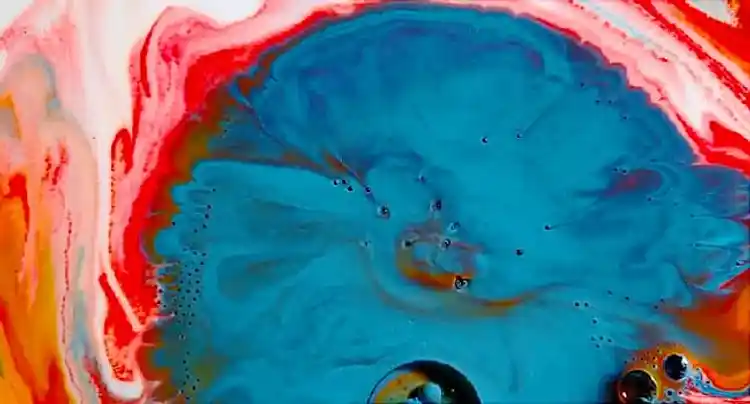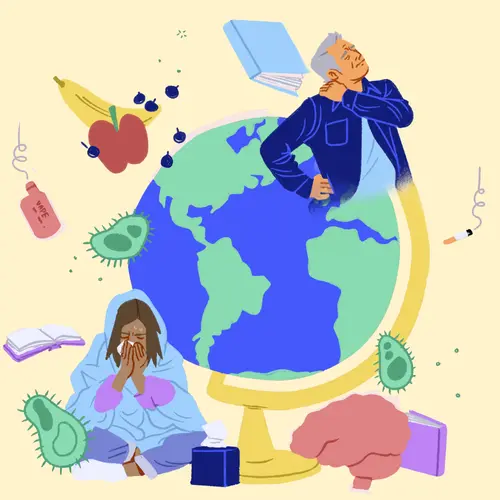Illustrating Bipolar With Art

Hide Video Transcript
Video Transcript
MISSY DOUGLAS
Day 26-- I'm trapped in a forest of fury and jealousy. Day 169-- today I am elated, lost in high oblivion. Day 204-- I have no idea how I feel. Day 314-- I am flying. I am untouchable. Day 177-- please God, no. Day 236, day 204, 291, day five, 26, 59, [INTERPOSING VOICES] Today. Art has always been a part of my life in some form. So it gives me a role and a sense of purpose. As artists, we often use personal experiences as the source of inspiration for something. We use that as a launch pad from which to explore wider themes which can speak to a greater number of people. I was first diagnosed with bipolar disorder at 19 when I was a student in the UK.
I honestly thought I would be diagnosed with depression. I thought, well, I have my answer now, so I can just move forward. That said, though, I didn't tell anybody about it, including my parents and my family. I was living a really kind of nice, cozy, kind of middle class life. And in that situation, you don't really admit your flaws because it's not acceptable. And I just got on with things.
And I think close friends could see that I was putting barriers up. I had just started working with my artistic partner, who's now my husband. We got to know each other more. And I told him about having bipolar. So he was one of the first people who knew about it.
KIM RASK
She tried to describe to me what it was like to have bipolar disorder. And I thought, you know, maybe if she could describe it visually, to paint it, that it might explain it more to me, because I'm very curious as to what it is like. Seeing something through another person's eyes-- she has a unique perspective. And that's what I was really interested in. MISSY DOUGLAS
So from that, the project originated. The premise behind the project was really for me to paint how I felt each day, every day, for a year. Periods of mania, depression, and stability would all be played out in oil paint on that canvas. So each day I would think about how I was feeling, write some text which would then focus my mind on how to present that in visual form. What we ended up with was not just a set of 365 images. But we also had the journal of the year, as well. KIM RASK
When I started to see more abstract pieces, I really, really enjoyed them. It's a visual journal of Missy's everyday thoughts. MISSY DOUGLAS
So as I was going through manic phases, the type of things I was painting echoed my frenetic state of mind. You will find a lot of color. You will find scratching. In depressive phases, we tend to see these clouds of white descending over the canvas. I swing from mania to depression very quickly. That's quite visually exciting to represent. I can honestly say this project was the first time that I truly engaged with what I had. I had avoided therapy a lot. I'd avoided medication. So this was the first time where I had to sit down and really confront who I was, but in a safe space. I was in the studio. So it was within a context I understood. The act of repetition was incredibly useful. So just the act of doing the project was quite therapeutic, in a way.
So at the end of the process, we thought it would be beneficial if we could get all of the paintings in one room for people to see so they could be entirely submerged into a world of someone living with bipolar. And this was a significant moment because this was the first time where we would have to reveal what the project was about.
KIM RASK
People were pretty impressed. She was not very happy to be there. She doesn't like to be at the center of attention. Is was difficult for her. MISSY DOUGLAS
So this was the first time that I told my parents. That was kind of difficult. It's not often that you keep a secret like this for 17 years. They were really proud of what I'd done and what we were doing. They were looking back over my life. Things started slotting into place for them, I think. KIM RASK
So you start to hear lots of stories of other people that know someone, or they are themselves. You would have never known before. MISSY DOUGLAS
And then people started talking about their own experiences in the exhibition. We moved from, oh, this is a cool experiment, to ah, actually, this could be quite helpful and have an impact. We had so many messages from people around the world. People were taking inspiration from what I've done and asking how they could do it themselves, how they could use their creative arts to understand how they felt and how the disorder played out in their own lives. The fact that it helped so many other people is the payback, really, for me. So the pacing I'm finishing now resurrects some of the symbols which were really prevalent during the project. And I'll be adding this new piece as a response to the original project. Now I look back, I understand how it was therapeutic. It definitely enabled me to understand how the disorder affects my life and who I am. Today it's done. It's over. I'm moving into the light and into reality.
